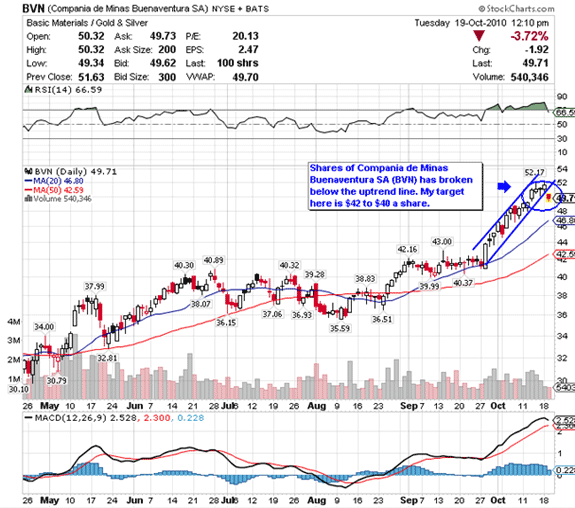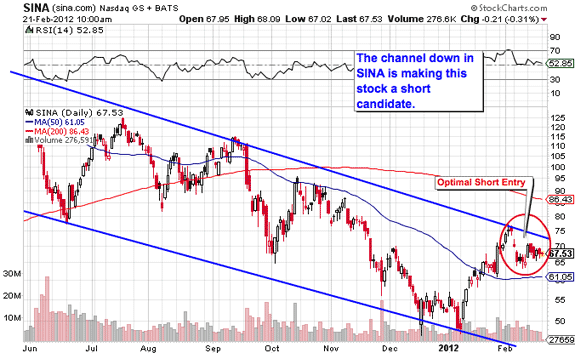5 Sentiment Indicators to Keep an Eye On Stockpickr! Your Source for Stock Ideas
Post on: 16 Март, 2015 No Comment

Stock Quotes in this Article: SH. SPY
By Jonas Elmerraji
Senior Contributor
09/30/11 — 05:24 PM EDT
stockpickr.com/4-key-indicators-technical-traders-toolbox.html > trader’s toolbox.
In today’s technical primer. we’ll take a look at some of the most useful sentiment indicators out there.
Sentiment indicators are especially helpful when used with contrarian investing strategies (if you missed our primer on contrarian investing, you can read it here ). In short, they provide an added way of seeing exactly what the crowd is thinking. Better, they help us see what different members of the crowd are thinking.
More From Stockpickr
That’s an important distinction — after all, the stocks that grandma is buying might be different from the investments that a hedge fund manager or commodities trading advisor are making. The fact that we have that level of granularity over sentiment indicators is particularly helpful.
A Rundown on Sentiment Indicators
So what sentiment indicators should you have on your radar? Here’s a quick rundown.
Even though these indicators may look at disparate data sources to calculate sentiment readings, there is a common thread: Generally, extremes in these sentiment indicators are a much more important signal to traders than the readings are themselves. From a contrarian standpoint, a historic extreme in bullish sentiment is a sign that its time to exit the market.
VIX Volatility Index
It makes sense to start off with what’s probably the most popular sentiment indicator out there: the VIX Volatility Index. Most traders think that the VIX is a volatility indicator (as its name implies), but frankly it’s not a very good one. It’s better suited to its nickname: a “fear gauge.” That’s because the VIX doesn’t measure true statistical volatility of a stock; it’s a measure of the volatility being priced into the market by investors.
It’s also important to remember that the VIX doesn’t move equally in both directions; instead, it’s biased toward downside volatility. The quick and dirty analysis is that a high VIX reading indicates a fearful market — and a potentially good contrarian buying opportunity.
Analyst and Advisor Opinion
We give the opinions of analysts and advisors a lot of weight — after all, they’re responsible for the research and recommendations that backs institutional buying. But it turns out analysts aren’t always good at predicting the market’s movement. Instead, they tend to be a good indicator of what “the crowd” is thinking about stocks.
There are a number of different ways to gauge analyst and advisor sentiment. One of the most popular is the Investors Intelligence survey, which gauges the bullishness of advisors to create an oscillating contrarian indicator. Another similar indicator is Market Vane’s Bullish Consensus Index, which follows the recommendations of CTAs for its readings. Both indicators are published weekly by Barron’s and are also available through a number of data providers.
It’s important to note, though, that that analyst sentiment can be used in a positive, non-contrarian way — particularly in the short term. In fact, rising analyst sentiment is the criterion for Stockpickr’s Rocket Stocks column — as of the most-recent column, those stocks were outperforming the S&P 500 by 87% in the previous 122 weeks. Again, the key to this strategy’s success is the fact that takes a relative look at sentiment as it increases along the prevailing trend (a sign that the analysts were underestimating those stocks), rather than assuming that analysts are always correct.
Insider Buying
Insiders are another special group of people that investors like to pay attention to. It stands to reason that corporate insiders are better equipped to determine their own firm’s investment worthiness — and insider buying is generally considered a bullish signal. There is one big caveat to that, however. Insiders aren’t any better at timing the market than that rest of the crowd. That means that extremes in insider buying aren’t valid timing tools for traders.
Instead, they’re a better signal that a stock is fundamentally cheap. Historically, insider buying has generated positive long-run returns simply because insiders are willing to buy when value looks attractive and hold through drawdowns. Looking for mini-extremes in insider buying when other sentiment indicators are at bearish extremes could be a good way to take advantage of that relationship.
Nova/Ursa Ratio
The Nova/Ursa Ratio is a sentiment indicator that’s constructed by taking the assets under management in Rydex’s Nova (1.5x bullish) fund and dividing by the Ursa (bearish) mutual fund. A high reading indicates that crowd sentiment is especially bullish. The Nova/Ursa ratio is a lot like the put/call ratio in what it tells us, and like the latter, it has a number of structural issues.

An alternative can be constructed with ETFs — by taking a bullish S&P Index ETF such as the SPDR S&P 500 ETF (SPY ) and dividing its market cap by that of a bearish fund such as the ProShares Short S&P 500 ETF (SH ). The ratio itself is meaningless — the two funds’ nominal assets are irrelevant — but if it reaches extremes in its range, it can tell investors a lot about crowd sentiment. A high reading means that investors are pouring their cash into bullish ETFs; a low reading means that the crowd is making bearish bets.
Commitments of Traders Report
The Commitments of Traders report is another sentiment indicator that lets you see where market participants are actually putting their money. Published weekly by the CFTC, the report breaks down where significant traders are positioned in a number of different commodities. It also breaks trading positions down by the category the trader falls into (such as commercial hedgers versus managed money).
Like most government publications, the CoT report can be an extremely cryptic document. Even so, the breakdown it provides can be very useful for traders in pretty much any market imaginable. The key is to follow the “smart money” and treat most other participants with a contrarian viewpoint. Generally, the smart money is made up of traders in the “Producer/Merchant/User/Processor” category — the group that uses derivatives to hedge against commodity price risks in their businesses.
As with the other sentiment tools we’ve looked at, the key to look for is extremes in trading positions.
Analyzing sentiment is often more art than science. But sentiment indicators like the ones we’ve discussed add a quantitative bent to the discussion — one that can be tested statistically against markets for some interesting results. Keep in mind that there are scores of other sentiment indicators available to investors, both quantitative and anecdotal. This primer only scratches the surface of using sentiment as a trading tool.
Next time, we’ll add to your technical repertoire with another primer that will bring you closer to implementing technical analysis for your portfolio.
In the meantime, do you have a burning technical analysis question? Get it answered by heading to Stockpickr Answers .
— Written by Jonas Elmerraji in Baltimore.
RELATED LINKS:
>>3 Key Tools for the Contrarian Investor
>>Does Technical Trading Really Work?
>>A Primer on Point-and-Figure Charts














